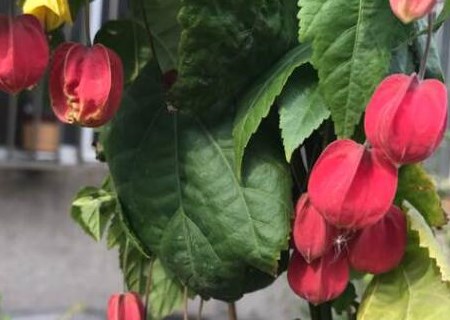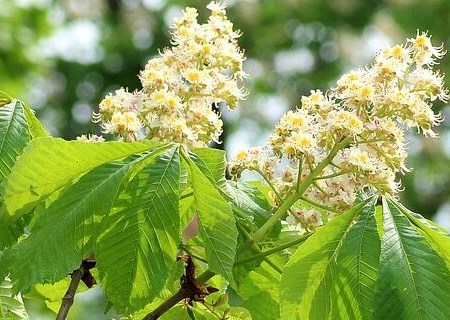How to raise Dendrobium
Dendrobium is a kind of orchid plant, which has different species distribution in different provinces of China, and is a kind of highly ornamental flowers. And the stem of Dendrobium can also be used as traditional Chinese medicine, which can be used to treat weakness, poor appetite and dry retching after illness. Its economic value is relatively high. So how to raise Dendrobium? The following editor has brought you the culture method of Dendrobium. Let's have a look!

1. Cultivation substrate
Planting Dendrobium should first choose a shady and wet place, because Dendrobium is a kind of epiphytic orchid, so we usually plant Dendrobium in pot. The substrate of potted plants should be mixed with various permeable substances such as bark, charcoal block, sediment and so on. However, when choosing bark, you should be careful not to choose bark that does not secrete aromatic substances. This can not only promote the root development of Dendrobium, provide sufficient nutrition for the growth of Dendrobium, enhance the nutrient absorption capacity, but also have a certain moisturizing capacity and improve the growth rate of Dendrobium.
2. Variety selection
There are many varieties of Dendrobium, and there are different varieties in almost every province of our country. For example, the varieties in Yunnan are mainly dwarf Dendrobium, while those in Guangxi and Hunan are mainly Dendrobium candidum. Therefore, when we choose planting varieties, we should make a reasonable choice according to the local varieties and market demand. The root capacity of Dendrobium is very well developed, which can be fixed on tree trunks or in stone cracks, and can absorb nutrients and water in the air. However, if the environment is suddenly changed, it may not be able to adapt, so it is not suitable to choose wild Dendrobium for family cultivation, and its survival rate is relatively low.
3. Methods of reproduction
The propagation method of Dendrobium is generally based on ramet propagation. First of all, we should choose a plant of Dendrobium with strong growth, high number of flowers and dense population as the mother plant. Then the mother plant was dug out in the whole basin and evenly divided into three parts according to the distribution of the mother plant and the group. Each clump should have at least 3 or more branches to ensure the flowering rate of the new plant. Then wash the roots, dry them, and place the new plants in a flowerpot with a substrate ready for work. The mixed soil should have good permeability and put an appropriate amount of charcoal to improve its drainage and irrigation capacity. Then it was watered and planted in a shaded area of about 50%.
4. Daily management
We should water Dendrobium orchid reasonably according to the growth of Dendrobium orchid and the moisture of the substrate, usually about 5-7 days. Each time the amount of water should not be too much, just keep the soil moist, otherwise stagnant water can easily lead to root rot and affect its growth. Dendrobium is suitable for growing in a warm environment, and its temperature should be controlled at about 20-25 degrees. The temperature should not be lower than 10 degrees, otherwise it will cause Dendrobium to enter the growing period ahead of time and die in severe cases. But the temperature should not be too high, if you stay in the environment above 30 degrees for a long time, then it will reduce the flowering rate of Dendrobium, or even not blossom.
It is also necessary to apply proper fertilizer in the process of cultivation, and sufficient compound fertilizer is generally applied in spring. Because the spring environment is very suitable for the growth of Dendrobium, the effect of fertilization is better, and the utilization rate is also relatively high. That's all for today's introduction. This article is for reference only. Thank you for your reading and support.
- Prev

What are the breeding methods and matters needing attention for the beautiful vine bluebells? When is the cuttage (striping)? What if it doesn't blossom?
Vine bluebells, also known as hanging bluebells, like warm, humid and sunny environment, but also resistant to semi-shade, cold and drought, suitable for loose, breathable, humus-rich soil. So do you know what breeding methods and precautions are there for bluebells? When is the cuttage (striping)? What if it doesn't bloom?
- Next

What are the seed planting methods of deciduous trees? What are the prospects? The difference between and banyan trees
The seven-leaf tree is a deciduous tree, up to 25 meters high, the seeds of the seven-leaf tree are edible, but the taste is bitter and astringent, it needs to be boiled in alkali water before edible, it tastes like chestnut. Starch can also be extracted. What do you know about the seed planting methods of the seven-leaf tree? What are the prospects? The difference between and banyan trees? Fine wood can make all kinds of utensils.
Related
- Fuxing push coffee new agricultural production and marketing class: lack of small-scale processing plants
- Jujube rice field leisure farm deep ploughing Yilan for five years to create a space for organic food and play
- Nongyu Farm-A trial of organic papaya for brave women with advanced technology
- Four points for attention in the prevention and control of diseases and insect pests of edible fungi
- How to add nutrient solution to Edible Fungi
- Is there any good way to control edible fungus mites?
- Open Inoculation Technology of Edible Fungi
- Is there any clever way to use fertilizer for edible fungus in winter?
- What agents are used to kill the pathogens of edible fungi in the mushroom shed?
- Rapid drying of Edible Fungi

